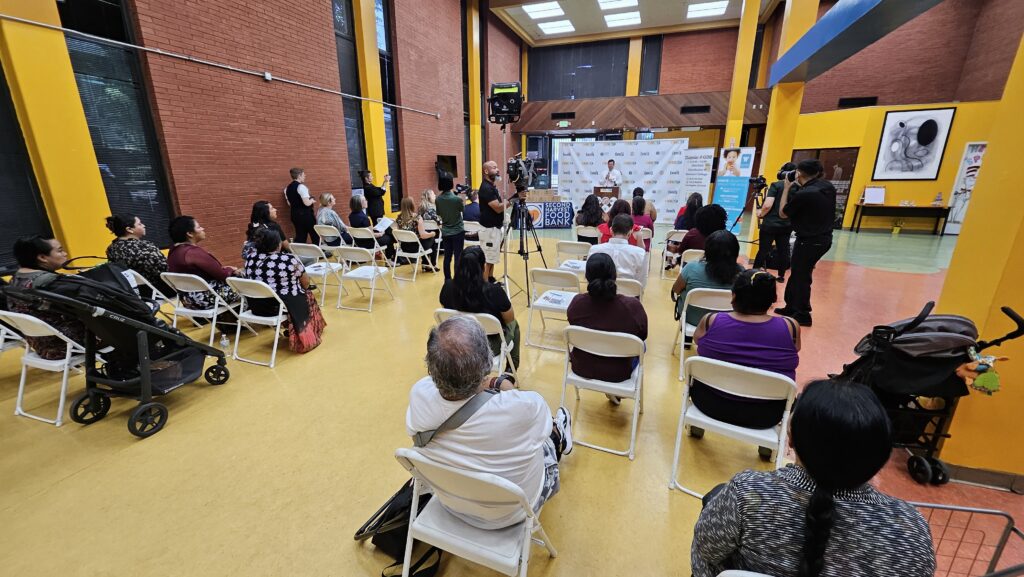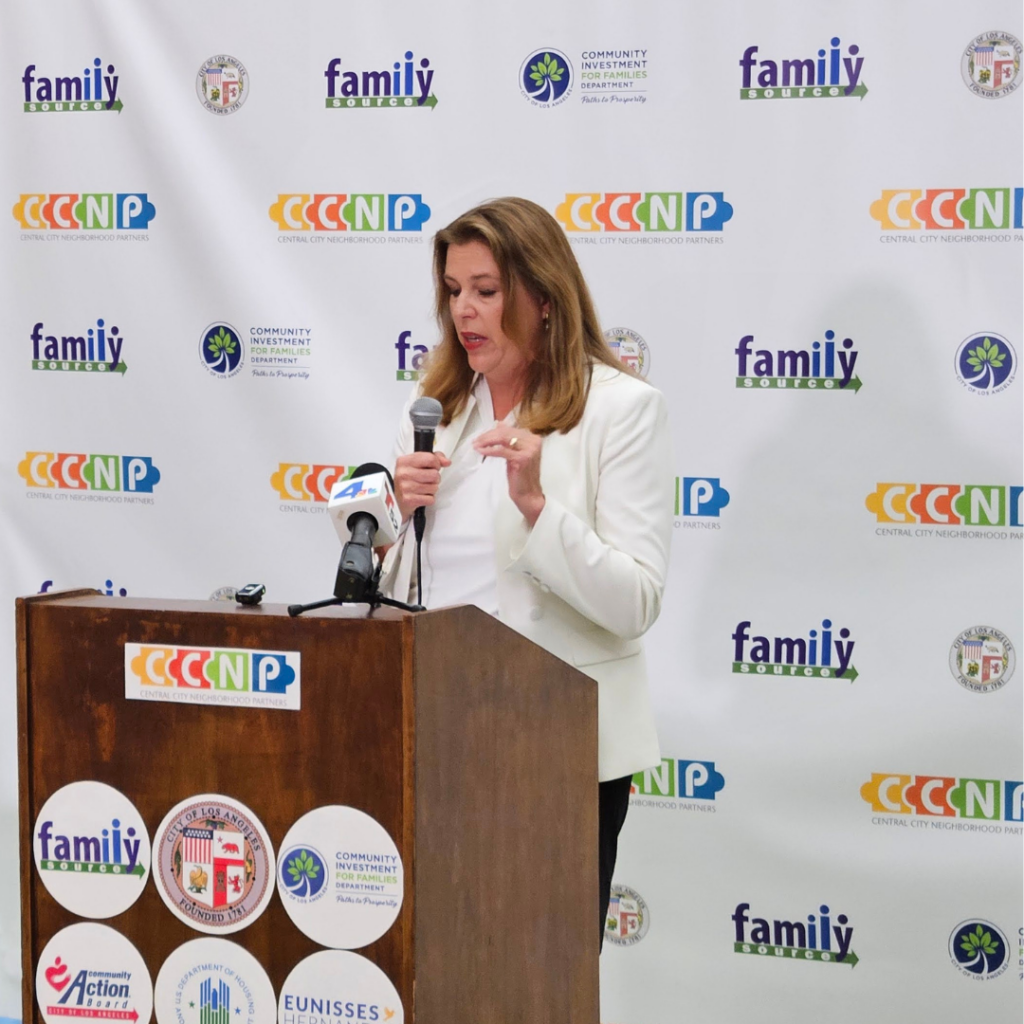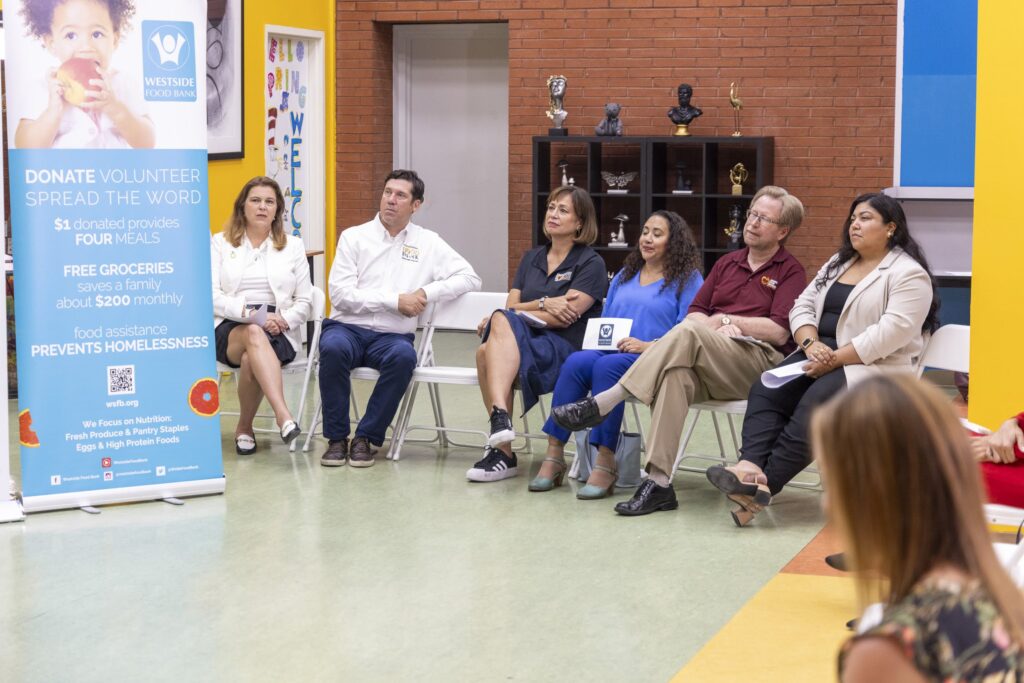California’s Hunger Crisis
September 16, 2024
We do not offer food. Here’s where you can find food.
No distribuimos alimentos. Encuentre comida gratis aquí.
我們不直接提供食物,但我們能幫助您找尋食物。
It’s a scene that’s become all too familiar for millions of Californians: families lining up for food assistance, wondering how they’ll make it through the month. Hunger is hitting hard across the state, with food insecurity rates similar to those we saw during the peak of the COVID-19 pandemic. But California’s food banks aren’t backing down—they’re uniting in the fight to end hunger, and they need your help.

Earlier this month, at Central City Neighborhood Partners (CCNP) in Los Angeles, leaders from CAFB and several regional food banks came together to reveal the alarming truth: 22% of households in California are struggling to put food on the table, and it’s even more dire for families with kids, where that number jumps to 26%. These aren’t just statistics—they’re real families, your neighbors, who need support now more than ever.

Michael Flood, CEO of Los Angeles Regional Food Bank (LARFB) emphasized the impact of rising food prices and the high cost of living. “We’re serving far more people than we were pre-pandemic, and we’re not seeing those numbers go down,” Flood explained. It’s a sentiment echoed by Mark Lowry from OC Food Bank, who noted that families are constantly battling between basic needs like housing and food.
In Orange County, Claudia Bonilla Keller, CEO of Second Harvest Food Bank of Orange County, pointed out that while the area is known for its wealth and attractions, many residents face the harsh reality of food insecurity. “One in 10 people in Orange County, including one in eight children, don’t know where their next meal is coming from,” she said.
At Westside Food Bank (WSFB), President Genevieve Riutort shared that her organization has been dealing with record-high levels of need for over a year. “The lines at our food pantries are getting longer, and we’re doing everything we can to make sure people don’t go hungry,” Riutort said.

These stories reflect a growing crisis, but they also highlight something powerful—community. At CCNP, over 600 families receive groceries and resources every Thursday through partnerships with food banks and local organizations. “We see firsthand how resilient and resourceful our community is, but we also see the incredible need,” said CCNP’s Executive Director, Margarita Alvarez Gomez. “It’s through collaboration that we’re able to provide stability for families who are struggling.”
The message is clear: the fight against hunger is bigger than any one food bank or organization. It’s going to take all of us — community members, local businesses, volunteers, and donors — working together to turn the tide.
Feeling inspired? Here’s how you can get involved.
In 2023, California’s food banks served more than 6 million people each month, and they couldn’t do it without the support of our communities.
Want to learn more about how hunger is affecting your community? Visit CAFB’s website for real-time data on food insecurity and find out how you can join the fight to end hunger in California. Together, we can create a future where every Californian has access to the nutritious food they need to thrive.